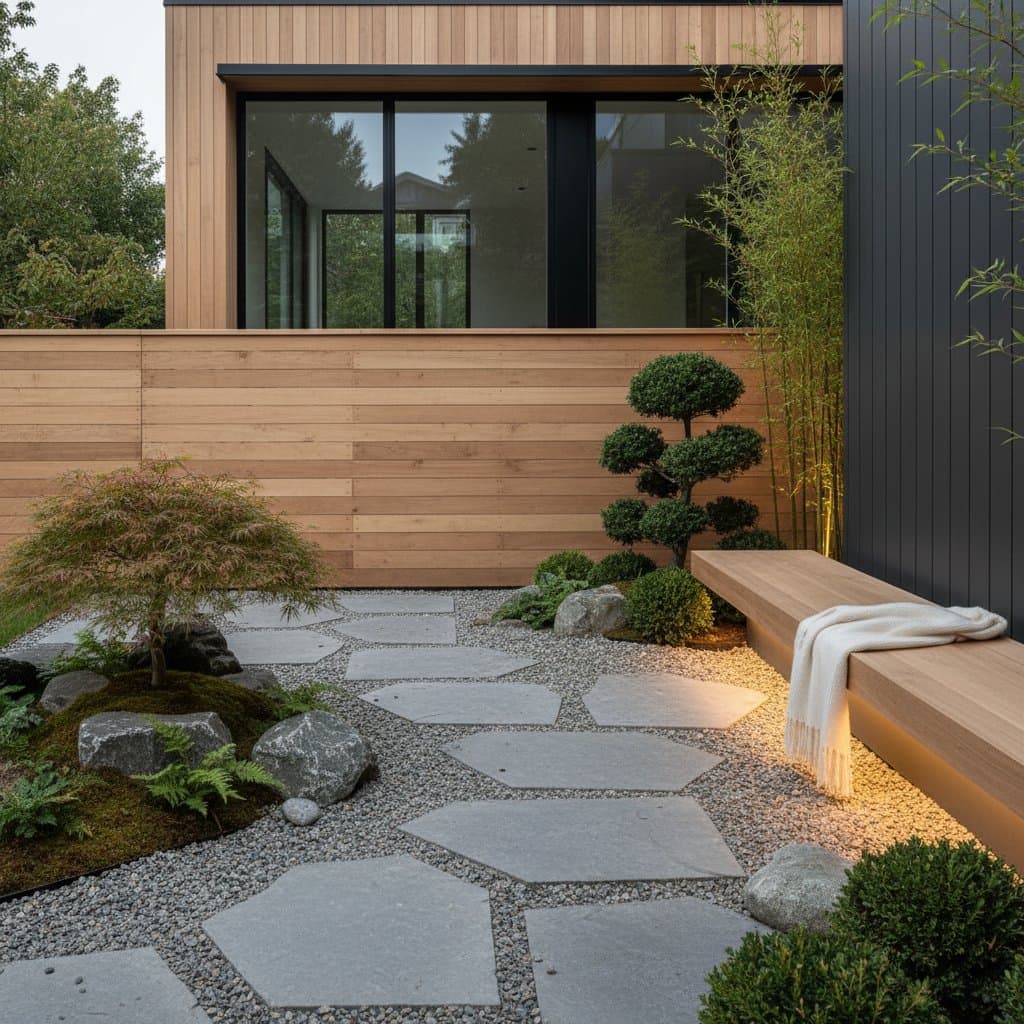Key Benefits of Gravel Gardens
Gravel gardens substitute conventional lawns with ornamental stones, resilient plants, and reduced labor. They conserve water, eliminate frequent mowing, and foster a contemporary, eco-conscious environment. Homeowners gain a landscape that endures with little oversight.
Proper site evaluation, base preparation, and flora choices guarantee enduring results. This method curbs evaporation, blocks weeds, and sustains plant health in arid conditions. The outcome delivers year-round allure without the burdens of traditional turf care.
How Gravel Gardens Work
Gravel gardens operate on a basic drainage mechanism. They exchange moisture-reliant grass for stones and tough vegetation, permitting swift water infiltration while holding sufficient hydration for roots. The gravel serves as a barrier that limits moisture loss and hinders weed emergence.
Site Evaluation Before Starting
Assess the location thoroughly prior to converting to a gravel garden. Note the terrain's incline, water flow, and light levels. Areas with inadequate drainage or dense clay demand regrading or soil enhancements.
Locate any underground pipes or wires to prevent disruption during digging. Address spots prone to water accumulation by adjusting the slope to direct flow from the house base. Full sunlight suits most designs, but select shade-adapted plants for dimmer zones.
Planning Your Gravel Garden
Essential Tools and Supplies
Gather a shovel, rake, and wheelbarrow for basic tasks. Use landscape fabric or robust weed barriers to block intrusions. Opt for edging like metal strips, aluminum borders, or stone outlines to frame the area.
Prepare a compacted layer of crushed rock about two inches deep as the foundation. Select decorative stones such as pea gravel, crushed granite, or limestone fragments for the surface. Choose hardy plants including lavender for fragrance, sedum for ground cover, allium for blooms, and grasses like fescue for texture.
Best Timing and Safety Measures
Schedule the work in dry weather to avoid compacting wet ground. Don gloves, sturdy footwear, and protective eyewear when digging or pressing materials. For larger sites requiring machinery, map clear paths and safeguard utilities.
Cost and Savings Overview
Initial outlay for gravel gardens depends on stone variety and plant quantity, often ranging from moderate to affordable. Maintenance expenses drop sharply compared to lawns, sparing costs on water, nutrients, and tools. Source materials nearby to cut shipping fees and match local weather patterns.
Step-by-Step Installation Guide
Step 1: Clear the Turf
Slice and remove the current grass using a spade or rental sod cutter. Haul away the sod or compost it if weed-free. Extract every root remnant to stop regrowth piercing the new layer.
Step 2: Build the Foundation
Till the soil down six inches and blend in sand or small stones for better percolation. Smooth the ground and firm it with a tamper or mechanical roller. This step averts future shifts or dips.
Step 3: Lay the Weed Barrier
Unroll the fabric with six-inch overlaps at joins. Anchor it using metal pins to hold position. Pierce only for plant insertions to preserve integrity.
Step 4: Set the Borders
Place edging along edges to secure stones and sharpen lines. This containment stops spillover into paths or neighboring beds.
Step 5: Layer the Base Stones
Distribute two inches of crushed rock and press it flat. Confirm the tilt guides water clear of buildings. This underlayer bolsters stability and flow.
Step 6: Position the Plants
Create openings in the barrier for each specimen. Cluster types sharing water and light preferences. Arrange according to full growth span to allow breathing room, then pack soil around bases and settle gently.
Step 7: Top with Decorative Stones
Distribute the surface gravel to two inches thick. Even it out with a rake, ensuring soil coverage without smothering plant tops. This final touch seals the design against weeds and erosion.
Ensuring a Flawless Finish
Examine the area for even stone depth and steady gradient. Soak the plants deeply post-planting to root them securely. Test runoff in rain to spot any low points.
Minimal weeds emerge with correct barrier and depth. Pull any stragglers promptly to avoid seeding. Refresh the gravel periodically to sustain vibrancy and fullness.
Ongoing Maintenance Tips
Tend to gravel gardens sparingly across seasons. Clear leaves and rubbish to preserve breathability. Prune vegetation to shape it and encourage vitality.
Most plants prosper in nutrient-poor settings, skipping routine feeding. During prolonged droughts, provide targeted water. For vigor, scatter compost near stems instead of chemicals.
Maximizing Your Gravel Garden's Appeal
This landscape offers varied textures and hues that captivate through seasons, unburdening owners from constant chores. It aligns with resource-wise habits, yielding a serene, enduring retreat.




